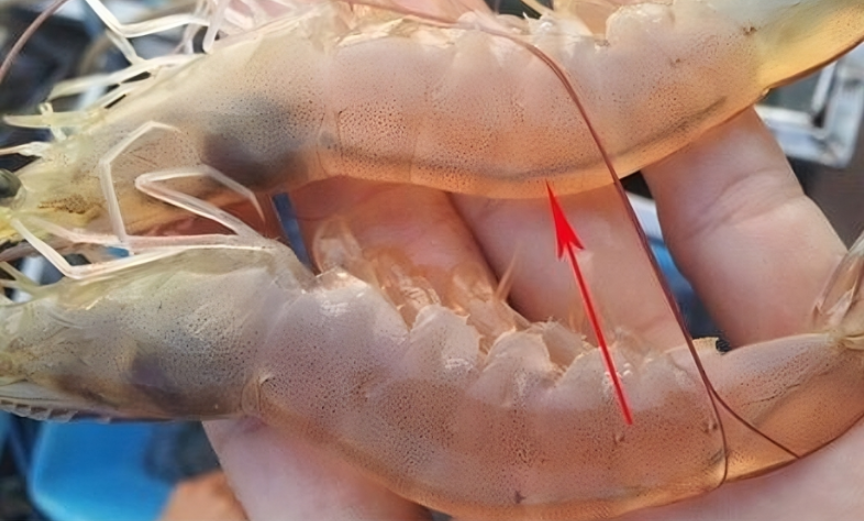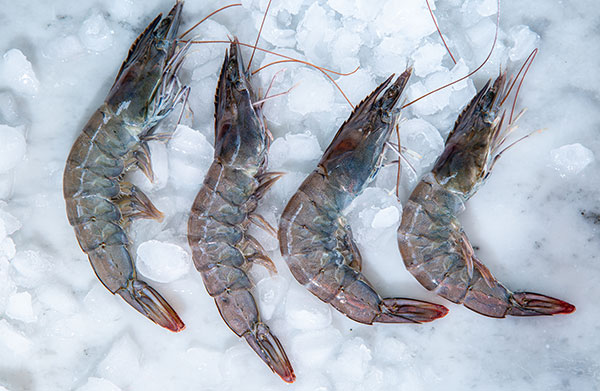Buying fresh, high-quality prawns can be tricky, especially when you come across deals that seem too good to be true. While the price may tempt you, certain telltale signs could indicate that the prawns are spoiled or of inferior quality. Knowing how to spot these signs will save you from making a bad purchase. Here’s what to look for when buying prawns, so you can avoid making costly mistakes, even if they come at a cheap price.
1. Pay Attention to the Heads and Tails of Prawns

One of the clearest indicators of a prawn’s freshness is its head and tail. Fresh prawns typically have bright, intact heads and tails, but if you notice blackened heads or tails, this is a red flag. The darkening happens due to enzyme reactions that occur when prawns are exposed to high temperatures or stored improperly without enough oxygen.
- Why It Matters: If you spot prawns with black heads or tails, it’s likely they’ve been sitting around for too long and are beginning to spoil. Consuming these prawns could lead to foodborne illnesses, so it’s best to leave them behind, regardless of how cheap they are.
2. Avoid Hard Prawns That Don’t Curl
Another crucial tip is to check the texture and shape of the prawns. Fresh prawns should have a naturally soft, curved shape. If the prawns you’re looking at are unusually straight and hard to the touch, it’s a potential sign that they’ve been injected with chemicals or impurities. This practice is sometimes used to increase the weight of the prawns and give them a more bloated appearance.
- Why It Matters: Chemically altered prawns lose a significant amount of water when cooked, which results in shriveled, flavorless meat. For health reasons and for better taste, always opt for prawns that feel firm but not stiff, and that retain their natural curve.
3. Inspect the Skin: Freshness is in the Details
The skin or shell of the prawns is another strong indicator of their freshness. Fresh prawns will have skin that is tightly attached to their bodies. If you notice that the skin is starting to peel or looks loose, that could mean the prawns have been harvested or stored for a long time, indicating a drop in quality.
- Why It Matters: Loose or peeling skin means the prawns have likely been sitting on the shelf for too long. Fresh prawns will always have a smooth, intact shell that clings firmly to the meat underneath.
4. Fresh vs. Frozen: Choose Wisely
Whenever possible, go for fresh prawns over frozen ones. While frozen prawns can still be a decent option, fresh prawns tend to have superior flavor and texture. If you’re buying from a seafood market, try to ask where the prawns come from and how long they’ve been on display.
- Why It Matters: Fresh prawns have better flavor retention, while frozen prawns can sometimes lose their natural sweetness and become mushy when thawed. If you have access to fresh prawns, they will provide a much better culinary experience.
5. Pay Attention to the Odor
A fresh prawn should have a clean, briny smell that reminds you of the ocean. If you notice any strong, fishy or foul odor, this is a clear sign that the prawns are no longer fresh and may have started to rot. The presence of a strong smell is often an indicator of bacterial growth, which can pose a health risk.
- Why It Matters: Trust your sense of smell. If something smells off, it probably is. Fresh prawns will never have an overpowering odor, so if you detect anything unpleasant, avoid buying those prawns.
6. Check the Color for Brightness

When inspecting prawns, always choose ones that have a bright, clear color. Prawns with dull or brownish hues should be avoided. Dull coloration can be a sign of age, and brown or discolored spots might indicate damage or decay.
- Why It Matters: Color is one of the easiest ways to tell how fresh prawns are. Fresh prawns have vibrant, translucent shells, while old prawns lose their shine and can turn dull or greyish.
7. Watch for Red or Black Spots
In addition to color, keep an eye out for red or black spots on the prawn’s body. These spots may indicate infections or physical damage that occurred during harvesting or transportation. Red spots often suggest bruising, while black spots could signify bacterial contamination.
- Why It Matters: Prawns with such spots are often compromised in terms of quality and safety. Eating prawns with visible spots can lead to health issues, so it’s best to choose prawns that are spotless and visually clean.
Conclusion: Be Selective When Buying Prawns

Buying prawns may seem like a simple task, but it requires a bit of attention to detail if you want to avoid spoiled or low-quality products. By focusing on the heads and tails, skin condition, texture, odor, and color, you can easily spot signs of freshness—or lack thereof. While it may be tempting to buy cheap prawns, the potential health risks and subpar quality just aren’t worth it.
When in doubt, always opt for prawns that are fresh, with intact skin, a mild oceanic smell, and a naturally curved shape. Taking these precautions ensures that you’ll bring home delicious, safe-to-eat prawns that will elevate your next meal. Avoid prawns that display any of the warning signs mentioned above, and you’ll be on your way to a seafood feast that’s both flavorful and safe!


